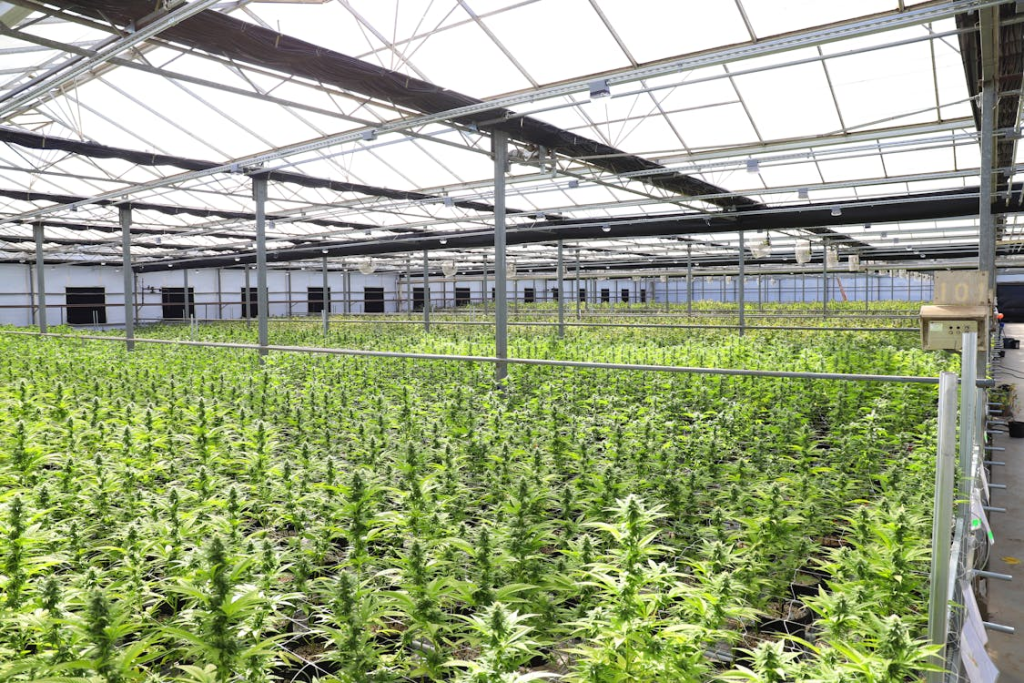Your cart is currently empty!
Big Pharma Stands To Lose $18.5 Billion If All 50 States Legalize Medical Marijuana

Medical marijuana, or cannabis, is no longer just seen as something people use recreationally. It’s now making serious waves in the medical world. For conditions like chronic pain and epilepsy, medical marijuana is proving to be a powerful treatment option. And the potential doesn’t stop there. Research is showing that cannabis could also help with things like nausea, insomnia, anxiety, and even depression.
What’s really exciting, though, is the possibility that it might do more than just manage symptoms. Some studies are hinting that cannabis could ease the harsh side effects of chemotherapy—and maybe even play a direct role in fighting cancer. If these findings hold up, medical marijuana could change the way we think about treating some of the most challenging health conditions
Why Is Medical Marijuana Still Illegal?

It’s pretty surprising, but despite all the proven benefits, medical marijuana is still illegal in many parts of the U.S. You’d think that something with fewer side effects than most prescription drugs would be available everywhere by now. But, here we are—many states still haven’t approved it for medical use.
So, what’s the real reason for the hold-up? Well, it might not just be about health concerns. A lot of people think it has to do with money. Specifically, the pharmaceutical industry—often referred to as “Big Pharma”—might be behind some of the resistance. If medical marijuana becomes widely legal, it could replace or reduce the need for many traditional medications. That means fewer profits for the companies selling those drugs. With so much money on the line, it’s no wonder the push for legalization seems to stall.
How Cannabis Could Cut into Big Pharma’s Profits
The pharmaceutical industry has a lot at stake when it comes to medical marijuana. A study from New Frontier Data, a research firm, looked into what could happen if cannabis became fully legal across the country. Their findings suggest that many patients would switch from traditional medications to medical marijuana.
According to Giadha Aguirre De Carcer, the CEO of New Frontier Data, if medical cannabis was legalized nationwide, it could start replacing or being used alongside a lot of pharmaceutical drugs. That’s a big deal because certain types of medications—like those for chronic pain or anxiety—are huge money-makers for pharmaceutical companies.
If more people start using medical marijuana instead of these traditional treatments, it could mean billions of dollars in lost revenue for Big Pharma. And that might be part of the reason why the push for national legalization keeps hitting roadblocks.
Big Pharma’s Billions at Risk
Legalizing medical marijuana could shake up more than just the health world—it might also hit the pharmaceutical industry’s wallet. A study from New Frontier Data found that states where medical marijuana is legal saw a drop in the sales of certain pharmaceutical drugs. In fact, they estimated that if medical marijuana was legalized across the U.S., pharmaceutical companies could lose billions of dollars in profits.
Between 2016 and 2019, they predicted a loss of up to $18.5 billion for companies that make medications for conditions like chronic pain and anxiety. For Big Pharma, this isn’t just pocket change—it’s a serious hit to their bottom line. And with so much money at stake, it’s easy to see why there’s pushback on nationwide legalization.
Conditions Medical Marijuana Can Help
Medical marijuana isn’t just about chronic pain and epilepsy—it’s being looked at for a bunch of other conditions too. According to the National Academies of Science, cannabis is showing promise in treating several health issues, including:
- Chronic Pain: Cannabis interacts with your body’s natural systems to help manage pain, making it a good alternative to heavy painkillers.
- PTSD: People with PTSD, especially veterans, are finding relief with cannabis by reducing anxiety and helping them sleep better.
- Anxiety: Cannabis has calming effects, which is why some people turn to it for managing stress and anxiety.
- Nerve Pain: For those with nerve damage or neuropathy, medical marijuana can be an effective way to manage pain that doesn’t respond well to other treatments.
- Chemotherapy-Induced Nausea and Vomiting (CINV): Patients undergoing chemotherapy often deal with nausea, and cannabis has been shown to help ease those side effects.
- Tourette Syndrome: Some studies suggest that cannabis might reduce tics in people with Tourette Syndrome.
- Glaucoma: Cannabis is known to reduce the pressure in the eyes, which helps people dealing with glaucoma.
- Seizures/Epilepsy: For people with epilepsy, especially those resistant to other treatments, medical marijuana can reduce the frequency of seizures.
These are just some of the conditions where medical marijuana is proving to be a valuable option. As more research is done, the list could grow even longer.
How People Are Changing Their Views on Medical Marijuana
Public views on medical marijuana have changed a lot in recent years. What used to be a controversial subject is now something more people are open to talking about. As more stories come out about how cannabis can help with pain, anxiety, and other health issues, opinions are shifting in a positive direction.
Surveys show that more people than ever support the use of medical marijuana. Many see it as a safer, more natural choice compared to traditional medications. This change in how people feel is also pushing lawmakers to rethink old laws and consider new ones that could make medical marijuana more available. As states continue to legalize it, the stigma around cannabis is starting to fade.
This growing support from the public might help speed up efforts to legalize medical marijuana nationwide. More acceptance means more people are ready to see it as a real option in healthcare.
What’s Next for Medical Marijuana?

The future of medical marijuana still feels uncertain, even as more states recognize its benefits and legalize it for medical use. But the road ahead isn’t exactly smooth. Industries like Big Pharma are pushing back, and that resistance could be slowing down nationwide legalization efforts.
However, as research continues to pile up showing how medical marijuana can help with serious conditions, more people are questioning why it isn’t available everywhere. It’s becoming clear that medical marijuana isn’t just a passing trend—it’s a genuine treatment option that could change the way we manage pain, anxiety, and many other conditions.
Whether it becomes fully legal across the U.S. remains to be seen, but one thing’s for sure: this conversation is far from over, and medical marijuana will likely play a growing role in healthcare moving forward.
